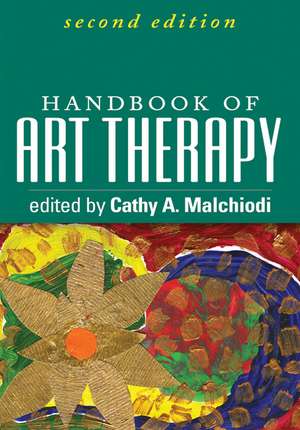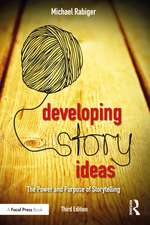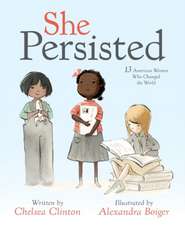Handbook of Art Therapy, Second Edition
Editat de Cathy A. Malchiodien Limba Engleză Hardback – 21 dec 2011
New to this edition:
- incorporates the latest clinical applications, methods, and research
- chapter on art materials and media (including uses of new technologies)
- chapters on intervening with domestic violence survivors, bereaved children, and military personnel
- expanded coverage of neuroscience, cultural diversity, and ethics.
Preț: 555.69 lei
Preț vechi: 604.01 lei
-8% Nou
106.33€ • 111.25$ • 88.33£
Carte disponibilă
Livrare economică 13-27 martie
Livrare express 26 februarie-04 martie pentru 51.71 lei
Specificații
ISBN-10: 1609189752
Pagini: 496
Ilustrații: Illustrations
Dimensiuni: 178 x 254 x 30 mm
Greutate: 1.04 kg
Ediția:Revizuită
Editura: Guilford Publications
Colecția Guilford Press
Public țintă
Postgraduate, Professional, and Professional Practice & DevelopmentRecenzii
"An essential, integrative tool for introducing new art therapists and other human service professionals to the field of art therapy ߝ and a terrific resource for experienced practitioners, as well. Malchiodi and her contributing authors describe 'what art therapy is' in a clear and direct manner and provide meaningful applications of theory into practice. The volume demonstrates how art therapy actually works to provide psychological aid to a wide range of clients, from children in crisis to combat veterans. New coverage of technology and other topics brings the second edition up to date for this decade and beyond. I look forward to using this handbook as a text in my undergraduate and graduate courses." - Julia Byers, Division of Expressive Therapies, Lesley University, USA
Cuprins
Part I: The Art and Science of Art Therapy. Vick, A Brief History of Art Therapy. Malchiodi, Art Therapy and the Brain. Malchiodi, Art Therapy Materials, Media, and Methods. Malchiodi, Art Therapy in Practice: Ethics, Evidence, and Cultural Sensitivity. Part II: Clinical Approaches to Art Therapy. Malchiodi, Psychoanalytic, Analytic, and Object Relations Approaches. Malchiodi, Humanistic Approaches. Malchiodi, Rozum, Cognitive-Behavioral and Mind-body Approaches. Riley, Malchiodi, Solution-Focused and Narrative Approaches. Malchiodi, Developmental Art Therapy. Malchiodi, Expressive Arts Therapy and Multimodal Approaches. Part III: Clinical Applications with Children and Adolescents. Tanaka, Urhausen, Drawing and Storytelling as Psychotherapy with Children. Steele, Kuban, Using Drawing in Short-term Trauma Resolution. Gil, Art and Play Therapy with Sexually Abused Children. Safran, An Art Therapy Approach to Attention-Deficit/Hyperactivity Disorder. Gabriels, Gaffey, Art Therapy with Children on the Autism Spectrum. Councill, Medical Art Therapy with Children. Miller, Art Therapy with Adolescents. Part IV: Clinical Applications with Adults. Gladding, Art in Counseling. Malchiodi, Creativity and Aging: An Art Therapy Perspective. Spaniol, Art Therapy with Adults with Severe Mental Illness. Wilson, Art Therapy in Addictions Treatment: Creativity and Shame Reduction. Malchiodi, Art Therapy with Combat Veterans and Military Personnel. Malchiodi, Miller, Art Therapy and Domestic Violence. Part V: Clinical Applications with Groups, Families, and Couples. Waller, Group Art Therapy: An Interactive Approach. Liebmann, Developing Themes for Art Therapy Groups. Klorer, Group Approaches with Sexually Abused Children. Malchiodi, Using Art Therapy with Medical Support Groups. Malchiodi, Art Therapy with Families and Couples. Rozum, Art Therapy with Children in Grief and Loss Groups. Part VI: Art-based Assessments. Malchiodi, A Brief Overview of Art-based Assessments. Kaplan, What Art Can and Cannot Tell Us.
Notă biografică
Descriere
Widely regarded as the standard reference in the field, this Handbook provides a complete overview of art therapy, from theory and research to practical applications. Leading practitioners demonstrate the nuts and bolts of arts-based intervention with children, adults, families, couples, and groups dealing with a wide range of clinical issues. Rich with illustrative case material, the volume features nearly 100 sample drawings and other artwork. The inclusion of diverse theoretical approaches and practice settings makes the Handbook eminently useful for all mental health professionals interested in using art in evaluation and treatment.
New to this edition:
- incorporates the latest clinical applications, methods, and research
- chapter on art materials and media (including uses of new technologies)
- chapters on intervening with domestic violence survivors, bereaved children, and military personnel
- expanded coverage of neuroscience, cultural diversity, and ethics.
















